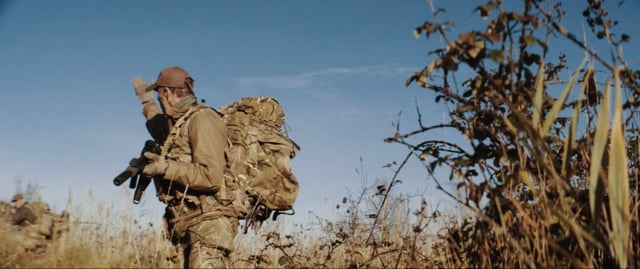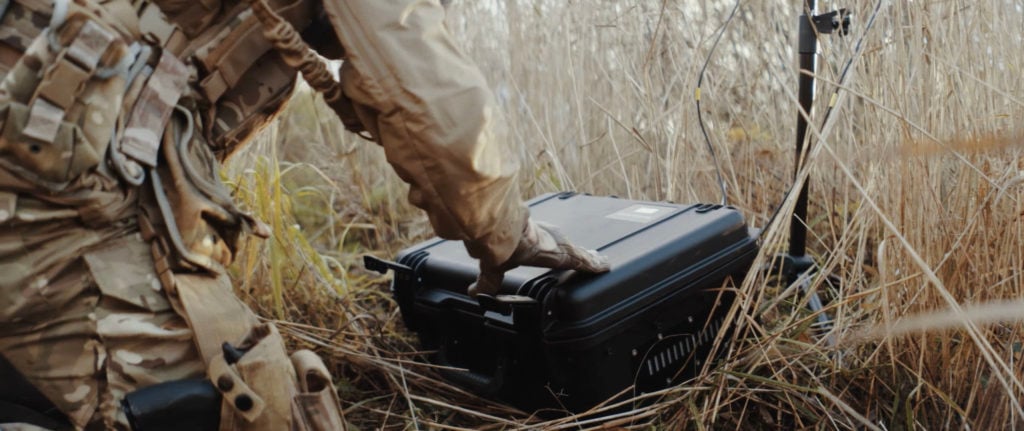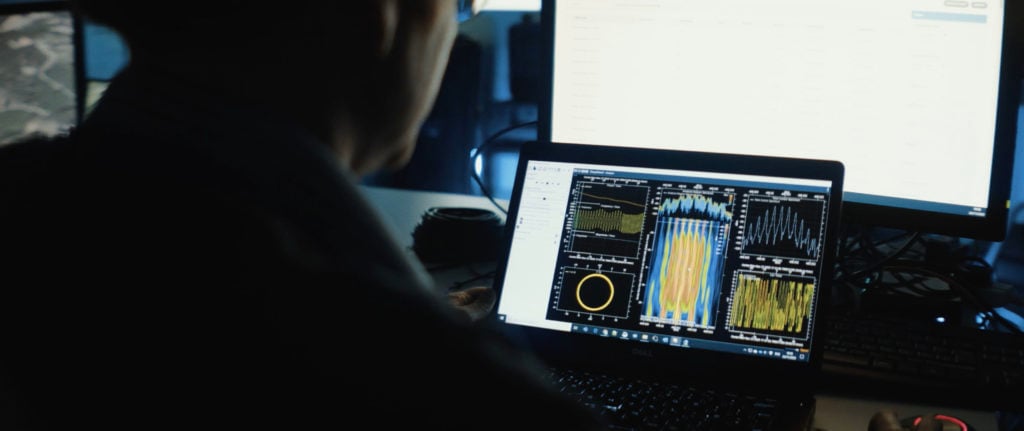
Living in a Box
CRFS’ RFeye Stormcase 100-18 aids signals intelligence collection with its highly deployable and easy-to-use design.
They had been watching the farmhouse for some time. The commandos were dug in and well-camouflaged. They remained a safe distance away avoiding detection, keeping their eyes on the buildings. The troops watched the regular comings and goings, the ‘persons of interest’ visiting the house and meeting their associates in the dead of night.
There had been a development over the last twelve hours. In the early morning, a jeep arrived delivering what looked like several military radios to the occupants. The commandos reported the news back to base. Frustratingly, the troops could only occasionally see what was going on in the house by training their binoculars on the windows, but glimpses of cables and antennas betrayed that the radios were being readied for use. Back at headquarters the priority now was to collect Communications Intelligence (COMINT) from the radio traffic transmitted from inside the house.
The covert nature of the mission meant moving COMINT trucks into the area was out of the question. The fact that the commandos were several kilometres behind enemy lines would have anyway made this impossible. Fortunately, the troops had a trick up their sleeve. That night, two of the team went back to friendly territory to retrieve their RFeye Stormcase 100-18. The self-contained Signals Intelligence (SIGINT) system was carried by the troops back to their location and activated in a matter of seconds. At a flick of a switch they could now gather the all-important COMINT needed by their headquarters.
Frequencies
The RFeye Stormcase 100-18 is versatile kit. Covering frequencies of 9 kilohertz/kHz to 18 Gigahertz/GHz it not only collects COMINT on radios transmitting on High Frequency and Very/Ultra High Frequency wavebands, but also collects SIGINT on a range of emitters including radars and satellite communications. With noise figure ranging from 12 decibels (dB) for 9 kHz to 120 MHz signals, through to 13dB for 10 GHz to 18 GHz transmissions, few signals escape the system’s attention, even when using low power to obfuscate their existence. Furthermore, while one RFeye Stormcase 100-18 comfortably collects SIGINT across these frequencies, the use of 3 or more allows emitters to be accurately located using live or post-processed TDOA geolocation.
Offering 100 MHz of instantaneous bandwidth the RFeye Stormcase 100-18 uses a light-weight operating system. It has a multi-core, processor and delivers five hours’ continuous operating time on a single Mil-Spec cell. This can be increased by another ten hours using external Mil-Spec batteries and is designed to allow unlimited hot swapping or mains power for long duration missions. The equipment has a standard 512GB removable solid-state drive. CRFS can expand this to 1TB if the customer desires. Consuming a maximum of 65 watts the RFeye Stormcase 100-18 can operate in temperatures from -30 degrees Celsius/°C (-22 degrees Fahrenheit/°F) up to +50°C (122°F). The system is self-contained in a standard RFeye Stormcase box with a total weight of 15.5 kilograms (34.1 pounds). It can be comfortably carried by one person, and or discreetly transported and used in a vehicle.
Ease of Use
We sat down with Malcolm Sellars – product management lead to find out more. “The idea of the Stormcase 100-18 was to make it as portable as possible for a quick deployment,” said Malcolm. He says that time spent consulting with customers on what they need in a deployable signals intelligence gathering system was gold dust. Customers told him that they needed an easily deployable, self-contained design. “You don’t have to worry about power supply cables or weather proofing,” Malcolm commented, “The RFeye Stormcase 100-18 was specially designed to have simple configuration, even with gloved hands, to keep deployment time to a minimum, and low observability so that it can be quickly and easily concealed.” The RFeye Stormcase 100-18 can be left hidden and unattended recording signals of interest: “A soldier could dismount from their vehicle, take the RFeye Stormcase out, leave it there and come back in a couple of hours or the next day and retrieve it.” This approach lets the soldier/operative stay out of harm’s way and frees them to perform other duties while the RFeye Stormcase 100-18 is recording. As well as recording signals, the system can be connected to an external backhaul radio through its integral ethernet port. Signals can then be live streamed back to analysts at the headquarters for example. The ethernet port also lets the RFeye Stormcase 100-18 be controlled remotely.

Operative deploys RFeye Stormcase for a SIGINT mission
The Stormcase 100-18 was designed from the outset to be used by the untrained operator. They just need to flick a switch and the equipment starts its mission. The system can be configured well in advance, according to the SIGINT it is to collect. A specific ‘script’ can be uploaded to the Stormcase 100-18’s software letting the user define the mission’s parameters. For instance, the system can be programmed to hunt specific signals on specific frequencies while ignoring others. Alternatively, it can be optimised to record signals with specific waveform or modulation patterns. This ensures that the Stormcase 100-18’s memory does not fill up too quickly with extraneous signals. Equally, this quickens analysis as experts can get to work straightaway on signals of interest whether these have been recorded or are being transmitted in real time. Malcolm points out “You can specify the bands to sweep over. This does not have to be a continuous sweep, instead you can just specify your start and stop frequencies. You can configure the Stormcase 100-18 to do exactly what you want.” The Stormcase 100-18 has three ‘N’ type connectors for external antennas to cover different bands, and the software lets you quickly configure the system according to the antennas you will be using for the mission.

Analyst investigates intelligence from RFeye Stormcase
Enhancements
Revealing a little about the future, Malcolm says that improvements are in the offing for the RFeye Stormcase 100-18. Plans are afoot to expand its frequency range to 40 GHz. The advent of fifth-generation wireless communications which are expected to migrate to Millimetric Wave (MMW) frequencies of 30 GHz and above over the next decade will fit perfectly with a 40GHz version of the RFeye Stormcase to collect signals in such wavebands. Similarly, the military is showing interest in MMW frequencies for short-range, point-to-point communications on the future battlefield. These enhancements will ensure that the 40GHz RFeye Stormcase is ‘future proofed’ for the expected widescale adoption of MMW communications in the civilian and military realms. Although the deployable nature of the RFeye Stormcase 100-18 makes it ideal for military SIGINT collection, it is also perfect for civilian law enforcement. Its design makes it ideal for supporting covert police or counter-terror operations which may depend upon collecting relevant COMINT to monitor suspects or help prevent an attack.
